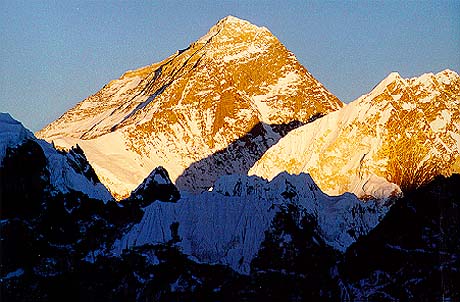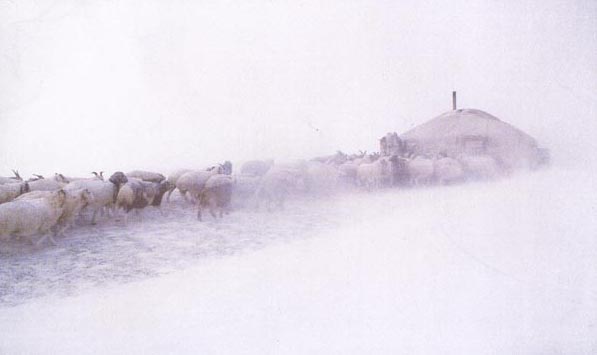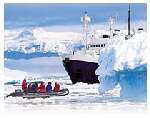|
|
|
UUS MATKASPORDI KÄSIRAAMAT
2004.a. juunis ilmub müüki kõigi matkajate kauaoodatud 'MATKASPORDI KÄSIRAAMAT'
'MATKASPORDI KÄSIRAAMAT' on mõeldud kõigile looduses liikujatele. Eesti keeles puudub
hetkel analoogne õppematerjal matkajatele. Analoogne käsiraamat ilmus viimati 1976.a.
('KAUGMATKAJA KÄSIRAAMAT', kirjastus "Eesti Raamat"). Käsiraamatu näol on tegemist
mahuka ja kõikehaarava õpikuga, mille eesmärgiks on erinevate matkaliikide ja
alpinismi propageerimine, baasteadmiste omandamine ning professionaalse
teadlikkuse tõstmine.
Käsiraamatus on pühendatud eraldi peatükid koos vastavate õppematerjalidega
(joonised, fotod) jalgsi-, jalgratta-, vee-, suusa- ja mägimatkajatele,
kirja panduna Eesti parimate asjatundjate poolt.
Arvestades klubi tegevust on mahukas osa pühendatud kaljuronimisele ja
alpinismile.
Vaata ka Jaan Künnapi Alpiklubi kodulehele
|
|
|
RÄNDURITE LEMMIKMAA ON TAI
Taist on saanud rändurite lemmikmaa
Maailma viie ihaldusväärseima sihtpaigana nimetati Taid, Itaaliat, Austraaliat,
Indiat ja Uus-Meremaad.
BNS uudis
|
|
|
EESTLASED LÄBISID SUUSKADEL GRÖÖNIMAA
 Suuskadel Gröönimaa läbinud mehed täitsid ammuse unistuse
Suuskadel Gröönimaa läbinud mehed täitsid ammuse unistuse
Airi Ilissoni artikkel EPL-s
Gröönimaa ekspeditsiooni kodulehekülg
|
|
|
TOP 100 (SEIKLUS)REISI RAAMATUT
(NATIONAL GEOGRAPHIC)
1. Maailma halvim reis (The Worst Journey in the World), Apsley Cherry-Garrard (1922)
2. Journals, Meriwether Lewis, William Clark (1814)
3. Tuul, liiv ja tähed, Antoine de Saint-Exupéry (1940)
Vaata eestikeelseid lõike sellest raamatust
...
6. Annapurna , Maurice Herzog (1952)
...
9. Hõredasse õhku, Jon Krakauer (1997)
10. Reisid, Marco Polo (1298)
11. Kaugeim Põhi, Fridtjof Nansen (1897)
12. Lumeleopard, Peter Matthiessen (1978)
...
17. Kon-Tiki, Thor Heyerdahl (1950)
...
20. Seitse aastat Tiibetis Heinrich Harrer (1953)
List National Geographic kodulehel
|
|
|
ESIMENE EESTLANE JÕUDIS DZHOMOLUNGMA TIPPU |
 |
|
EESTLASED DZHOMOLUNGMAL
 22. mai läheb Eesti alpinismi ajalukku kui päev mil esimene eestlane, 37-aastane
Alar Sikk jõudis planeedi kõrgeima mäe Mount Everesti (Sagarmatha, Dzhomolungma)
tippu. Kordaläinud Eesti esimese Everesti ekspeditsiooni liikmetest jõudis koos
Alariga tippu ka leedu alpinist Saulius Vilius, ekspeditsiooni juht oli suurte
kogemustega Tõivo Sarmet ja tõusujuht Raivo Plumer. Tippu jõuti kohaliku aja
järgi kell 3 pärastlõunal (kell 10 eesti aja järgi)...
22. mai läheb Eesti alpinismi ajalukku kui päev mil esimene eestlane, 37-aastane
Alar Sikk jõudis planeedi kõrgeima mäe Mount Everesti (Sagarmatha, Dzhomolungma)
tippu. Kordaläinud Eesti esimese Everesti ekspeditsiooni liikmetest jõudis koos
Alariga tippu ka leedu alpinist Saulius Vilius, ekspeditsiooni juht oli suurte
kogemustega Tõivo Sarmet ja tõusujuht Raivo Plumer. Tippu jõuti kohaliku aja
järgi kell 3 pärastlõunal (kell 10 eesti aja järgi)...
Loe edasi -->
Varem on Eesti alpinistid Tõivo Sarmeti juhtimisel jõudnud Cho Oyu tippu
(1998.a., 5 alpinisti) ja Broad Peakile (2001.a., nn Rocky Summit, 8035 m,
4 inimest). Eestlased Everstil varem käinud polnud, kuid lätlased jõudsid
planeedi tippu 1995.a. (varemalt Dhaulagiri 1993) ja esimene leedulane Vitkauskas
juba 1993.a.
Käesoleva alpinismihooaja muudab Mount Everestil eriliseks 50 aasta möödumine
Edmund Hillary ja Tenzing Norgay Sherpa esmatõusust planeedi kõrgeimasse
punkti 29. mail 1953.a. Seetõttu on mäel rekordiline hulk alpiniste, tippujõudnuid
saab arvatavasti olema 200 ringis. Suurim oli hiinlaste ekspeditsioon, kes
väidetavalt andis tipust ka esimese live-televisiooniülekande. Uuendatud on
ka mitmeid rekordeid: noorim tipputõusnu on nüüd 15 aastane sherpa tüdruk,
vanim on 70 aastane jaapanlane Yuichiro Miura (kelle suusasõidust Everesti
8000 m kõrguselt Lõnasadulalt vändati 1970.aastatel film, kuid mäe tipus ta
tookord ei käinud). Purustatud on ka tõusu kiirusrekord: Lhakpa Gelu Sherpal
kulus 10 tundi 47 minutit jõudmaks Nepaalipoolsest baaslaagrist (5300 m) tippu,
Apa Sherpa tõusis tippu juba 13. kord oma elus, jne.
Eesti ekspeditsioon algkoosseisus Tõivo Sarmet, Raivo Plumer, Margus Proos,
Ivar Lai, Boriss Slepikovski (arst, varem jõudnud Vene ekspeditsiooni
koosseisus 8500 m kõrgusele), Alar Sikk, Rein Loik, Saulius Vilius ja
Tõnis Lepik (kaameramees) jõudsid Tiibeti kiltmaal 5200 m kõrgusel asuvasse
Everesti baaslaagrisse 29 märtsil. Nad sooritasid kolm aklimatiseerumis- ja
varustuse ettevedamise tõusu: ülemisse baaslaagrisse (6450 m aprilli alguses),
Põhjasadulale (7000 m, aprilli keskel) ja 7600 m kõrgusele (29-30 aprillil:
Raivo, Alar ja Saulius). Seejärel tõusis väga tugev tuul ning kõik
ekspeditsioonid põgenesid mäelt baaslaagrisse. Käesolev aasta on Everestil
olnud erakordselt tuuline. Nagu eestlasedki, olid mitusada alpinisti aprillis
ja mais sooritanud oma aklimatiseerumistõusud ning olid valmis tippu ründama juba mai keskel, kui mäge tabas tugev torm, mis purustas mäenõlvale rajatud laagreid ja takistas rohkem kui nädala jooksul alpiniste Rongbuki baaslaagrist (5200 m) kõrgemale minemast. Paljud ekspeditsioonid loobusid üldse edasisest tõusust. Alles 20. mail jõudsid tippu põhjapoolset tõusumarsruuti kasutades selle hooaja esimesed alpinistid.
Eestlased alustasid 19.mail oma otsustavat rünnakut 6450 m kõrgusel asuvast
ülemisest baaslaagrist (ABC, Advanced Base Camp) tõusuga 7000 meetri kõrgusele
Põhjasadulale. 20. mail jätkasid Alar Sikk ja leedulane Saulius Vilius tõusu,
jõudes õhtuks 7500 m kõrgusel asuvasse järgmisse laagrisse. Neile järgnes
päevase vahega Ivar Lai, teised ekspeditsiooni liikmed laskusid sadulalt
tagasi ABC-sse. Põhjuseks on toodud ühelt poolt terviseprobleeme ja pikka aega
suurel kõrgusel viibimisest tingitud füüsilise vormi langust, teiselt poolt
napi varustuse tingimustes panuse tegemine sellel hetkel füüsiliselt kõige
paremas vormis olnud ekspeditsiooni liikmetele (teatavasti viis torm ära osa
mägironijate poolt ülemistesse laagritesse viidud varustusest telke,
magamiskotte, hapnikuballoone). 21 mai õhtuks jõudsid Alar ja Saulius 8300 m
kõrgusel asuvasse viimasesse laagrisse. Seal puhati mõned tunnid ning keedeti
teed magamisest ei tule sellisel kõrgusel midagi välja - ning peale südaööd
kella kolme paiku asuti tipu poole teele. Kaua aega ei olnud midagi teada
meeste käekäigust, sest omavaheline side alumiste laagritega katkes.
Teiste ekspeditsioonide kaudu saadud teated olid vastuolulised. Räägiti
marsruudi võtmelõikudesse, nn Esimese ja eriti 8600 m kõrgusel asuva Teise
Astme redeli juurde kujunenud alpinistide järjekordadest. Kuigi Everesti järsk
põhjahari oli Hiina ekspeditsiooni sherpade poolt eelnevalt tuginööridega
varustatud, muudab tõusu raskeks tugev tuul ja hapnikupuudusest tingitud
kurnatus. Paradoksaalselt sai paljudele saatuslikuks just see järjekord
Teise astme (Second Step) juures, sest 8600 meetri kõrgusel on liikumine
väga aeglane. Varem mäel valitsenud ebasoodsate tingimuste tõttu olid vägad
paljud ekspeditsioonid oma tipuüritsue planeerinud just nendele esimestele
veidigi soodsamatele päevadele. Arvatavasti oli põhjapoolsel tipuharjal tollel
päeval üldse 100-200 alpinisti. Shveitslased, kellega koos Alar ja Saulius
arvatavasti läksid, pöördusid kõik redeli juurest tagasi.
Tipuvallutus kinnitati
Raivo Plumeri telefonikõnega 23.mai õhtul. 24 mai õhtuks aga jõuti tagasi
baaslaagrisse, kust asjaosalised andsid juba telefoniintervjuusid. Alar Siku
väitel lõppes tal Teise astme juures raisatud aja tõttu tipus otsa hapnik,
ning allatulek muutus väga ohtlikuks. (Lisahapnik ei vii alpinisti kaugeltki
meretasemele, vaid vähendab subjektiivset kõrgust umbes 1 km võrra, kuid
lisandub hapnikuballoonide koormus). Alarit aitas elusana alla jõuda
meeskonnakaaslane Saulius. 22.mai õhtuks, peale ligi 20-tunnist kurnavat
päeva jõudsid mehed 8300 m vahelaagrisse. Selleks ajaks oli sinna tõusnud
Ivar Lai, kes esialgsete teadete alusel läks öösel samuti oma tipukatsele
ning jõudis umbes 8500 meetrini. Ilm oli veelgi ebasoodsam, pealegi jäi Ivar
ühe ettevaatamatu liigutuse tõttu ilma oma seljakotist, peale mida muutus
edasine prooviminegi võimatuks.
23. mail laskusid kõik ABC-sse (6400 m) ja 24. mail Rongbuki baaslaagrisse
5200 m kõrgusel. 26. maiks on ekspeditsioonil tellitud dzhiibid baaslaagrisse,
kust sõidetakse otse Katmandusse. Lhasa külastamiseks ei jää dzhiipidel sõites
enam aega, suur osa Hiina siselende on aga sarsi tõttu ära jäetud. Võidukas
Eesti ekspeditsioon jõuab koju 2. juunil kella 13 paiku.
Koostatud ekspeditsiooniliikmete telefonikõnede, ajakirjanduse ja
internetiallikate alusel.
Vaata ka:
Eestlased Dzhomolungmal
Meelitav, kohutav, rõhuv Mount Everest (A. Raudsepp)
Everesti ekspeditsiooni kodulehekülg
Matkainfot Everesti baaslaagrisse
http://www.reisi.net/index.php?id=696&artikkel_id=3813
http://www.everestnews.com/everestnews3/estonian.htm
|
|
|
MONGOOLIA PILDINÄITUS |
 |
|
M. SOOSAARE MONGOOLIA PILDID PÄRNU LINNAGALERIIS

Vaata 2001. aasta Mongoolia näituse pilte
Chaplini keskuse lehel
|
|
|
KULLAPESEMISE VÕISTLUSED SOOMES |
 |
|
SOOME LAHTISED MEISTRIVÕISTLUSED KULLAPESEMISES
 Soome lahtine kullapesemise võistlus ("Goldpanning Finnish Open")
korraldatakse 1-3 augustil käesoleval aastal Lapimaal, Saariselkä lähedal Tankavaaral.
Soome lahtine kullapesemise võistlus ("Goldpanning Finnish Open")
korraldatakse 1-3 augustil käesoleval aastal Lapimaal, Saariselkä lähedal Tankavaaral.
Üritused Lapimaal
|
|
|
LONELY PLANET UUDISTELEHT |
 |
|
LONELY PLANET COMET JAN 2004
IN THIS ISSUE:
Homepage - Free 2004 LP Diary Offer; Don George's 2003 Year in Review
Comet Survey - Tell Us What You Think, and Be in the Running for a Free Guidebook
Thorn Tree - Dining in Boston, Kiwi Car Hire and Sailing Lessons
Top 5 - Global Shopping Destinations (Forget New York, Paris, Hong Kong...)
Postcards - Cliffhanger Traditions in Iceland
Events - Travel Writing Seminars; UK Adventure Travel Show
Talk2us - How Are We Doing?
In many ways, Egypt is the Nile. And since tourism to Egypt first began, boating down
the world's longest river has been THE way to see the country. The following edited
extract from Lonely Planet's completely revamped Egypt explains one way to enjoy a
bit of Nile navigation:
There are hundreds of large cruisers travelling the Nile, but they are not the only
option for exploring this giant watercourse. For those who want extreme comfort - and
have the budget to pay for it - there are a few beautifully restored 'dahabiyyas'
(houseboats) sailing between Esna and Aswan, offering a return to the days of luxurious
and leisurely Nile travel. Cheaper and more popular with independent travellers are
feluccas; these simple sailboats are an alternative to the crowds and noise of the
large boats, offering a far more intimate experience of the river and monuments
(at an affordable price).
Most felucca trips begin at Aswan - the strong northward current means that boats
are not marooned if the wind dies. Trips go to Kom Ombo (two days, one night),
Edfu (three days, two nights) or Esna (four days, three nights). Many of the felucca
captains are Nubian (people originating from the region between Aswan and Khartoum
in Sudan) and will take you for tea in their village along the way. Nights are spent
on the boat or camping on an island in the Nile. Night-time entertainment ranges
from star-gazing to partying, depending on you and your fellow passengers.
Officially, feluccas can carry a minimum of six passengers and a maximum of eight;
it costs E£25 Egyptian per person to Kom Ombo, E£45 to Edfu or E£50 to Esna. On top of
this you need to add E£5 per person for police registration (this is done by the captain),
plus there's the cost of food supplies. You can get boats for less than the official
rate, but take care; if it's much cheaper you'll either have a resentful captain and
crew, or you'll be eating little more than bread and 'fuul' (brown fava beans, boiled
and mashed...mmm) for three days.
Finding a good captain is essential, especially if you are a woman travelling alone or
travelling as a group of women. Many of the better captains can be found having a
'sheesha' (water pipe) in Nileside restaurants such as the Aswan Moon or near the
Panorama restaurant in Aswan, or on Elephantine Island. If you want help, Shukri
Saad and his assistant Hakeem Hussein at Aswan's tourist office (tel 312 811;
Midan al-Mahatta) can recommend some reputable operators (or at least advise
you against some who are shady).
Some tips for planning felucca trips:
- Ensure that your boat is river-worthy - look for sunshade, comfortable seating,
blankets, cooking implements, a place to lock up valuables etc;
- Establish whether the price includes food;
- Agree on the number of passengers beforehand;
- Agree on the drop-off point before you set sail - many captains stop short of
towns then arrange for 'special' shared taxis to your final destination;
- Don't hand over your passport - a photocopy will do for the permit;
- Take plenty of bottled water (unless you fancy drinking the Nile) and whatever
other beverages you're into;
- BYO sleeping bag (it can get bitterly cold at night), insect repellent, hat,
and life jackets and other safety equipment;
- If your trip includes tours of sites such as the Temple of Karnak and Valley of
the Kings, make sure the admission costs are included (they can be expensive); and
- If you have a guide, make sure they don't divert you to a perfume or alabaster '
factory' unless you want to pay exorbitant prices for goods that include a hefty
commission for your guide.
Tellimiseks saada tühi e-mail aadressil:
join-comet@lists.lonelyplanet.com
Vaata LP Comet arhiivi
|
|
LONELY PLANET COMET JULY 2003
IN THIS ISSUE:
In the Spotlight - Cookin' With Gas in California
Compass - Score Yourself a "Cyprus" Guide
Soapbox - What's Shaking the Thorn Tree, LP's Bulletin Board?
Homepage - What's Hot on the LP Website?
Top 5 - Stuff to Do for Nought in Munich
Postcards - How Not to End Up in Jail in Panama
Press the Flesh - LP's Appointment Diary
Talk2us - How Are We Doing?
Destination - The Best & Worst of the Philippines
The siren songs of the Philippines are many and varied, played by an
impressive range of people and places. The most familiar with travellers
are doubtless Boracay and Banaue but, if you have the time, the country
offers visitors a tropical symphony of attractions.
While the larger islands like Luzon, Cebu and Mindanao make the most music,
the little islands often have the biggest surprises. Delights in a minor
key include Camiguin (Mindoro), for its rainforest and reef, the Visayas'
Bantayan beaches and Malapascua Island, 'the thinking person's Boracay'.
Then there are the activities: mountain biking on Guimaras, hiking on
Sibuyan Island, and diving and snorkelling off Moalboal, North Pandan
Island and southern Leyte. Other highlights include the sunset over Lake
Sebu, in the heartland of Mindanao's T'boli people, and the beautifully
preserved historic towns of Silay (on Negros) and Vigan (in North Luzon).
The Mt Mayon volcano's perfectly symmetrical cone and the weird lahar
(rain-induced landslide of volcanic debris) formations of Mt Pinatubo are
just two of the many volcanic sights on the islands.
And the lowlights? An easy inclusion is Angeles, the prostitution and
sex-tour capital of the country at least nearby Mt Pinatubo gives you
something else to look at if you have to pass through. Despite efforts to
clean up San Fernando (La Union) after the US military left, what remains
are a dearth of decent beaches and a swag of tourists in search of
prostitutes.
Manila would probably make most travellers' lists of 'cities you'd hate to
lose your passport in'. It's one of those places resident expats learn to
appreciate, if not exactly adore, but first-time visitors often can't wait
to escape the grime, crime and eye-popping chasm between rich and poor.
Fair enough though beyond the nightlife, the capital does have enough
attractions to keep you entertained for a few lively days.
More than a few towns would charitably fall into the 'nice place to live
but I wouldn't want to visit' category. Danao and Subic Bay and Mactan are
particularly devoid of charm; Tagbilaran's air pollution is sobering, and
Kalibo saves all its colour for its big Ati-Atihan Festival in January, the
nation's biggest and best mardi gras.
Tellimiseks saada tühi e-mail aadressil:
join-comet@lists.lonelyplanet.com
Vaata LP Comet arhiivi
|
|
LONELY PLANET COMET JUNE 2003
IN THIS ISSUE:
Compass - Mystery Guidebooks Up For Grabs
Soapbox - What's Shaking the Thorn Tree, LP's Bulletin Board?
Homepage - What's Hot on the LP Website?
Top 5 - Places to See Iraqi Culture Outside Iraq
Link - Jump in the Draw for an Italian Phrasebook
Postcards - Made With Love in the Caribbean
Press the Flesh - LP's Appointment Diary
Talk2us - How Are We Doing?
In the Spotlight - Wild wanderings in Alaska
In this edited extract from the new edition of Lonely Planet's Alaska guide,
we get the lowdown on getting as far into the distance as you can go - exploring
the remote Alaska Peninsula by ferry.
There are two ways to see a part of the remote region of Alaska known as
'the Bush' without flying. One of them is to drive the Dalton Highway to Prudhoe
Bay. The other is to hop onto the Alaska Marine Highway ferry when it makes its
special run five or six times each summer along the Alaska Peninsula to the
eastern end of the Aleutian Islands. Once a month from May through to September
or October the MV Tustumena departs Kodiak and continues west to Chignik, Sand
Point, King Cove, Cold Bay, False Pass and Dutch Harbour before backtracking to
Kodiak.
The Tustumena, a 290ft vessel that holds 230 passengers, is one of only two
ferries in the Alaska Marine Highway fleet rated as an oceangoing ship, thus
its nickname 'The Trusty Tusty.' The boat docks at smaller villages along the
way only to load and unload, which is plenty of time to get off for a quick
look around. In Dutch Harbour, the ship stays in port for six hours, long enough
for a van tour specifically designed to accommodate ferry passengers. This is
truly one of the best bargains in public transportation. The scenery and
wildlife are spectacular. You'll pass the perfect cones of several volcanoes,
the treeless but lush green mountains of the Aleutians and distinctive rock
formations and cliffs. Whales, sea lions, otters and porpoises are commonly
sighted, and birdlife abounds. More than 30 species of seabird nest in the
Aleutians, and over 250 species of bird migrate through here. Diehard birders
are often on board sighting albatrosses, auklet s, cormorants and puffins. If
you don't know a puffin from a kittiwake, you can attend presentations by the
onboard US Fish and Wildlife Service naturalist, who points out birds and other
wildlife and runs programmes on many aspects of the Aleutians.
Viewing wildlife and scenery depends, however, on the weather. This can be an
extremely rough trip at times, deserving its title 'the cruise through the
cradle of the storms.' On the runs in the fall, 40ft waves and 80 knot winds
are the norm, and no matter when you step aboard you'll find barf bags everywhere
on the ship - just in case.
Tellimiseks saada tühi e-mail aadressil:
join-comet@lists.lonelyplanet.com
Vaata LP Comet arhiivi
|
|
|
NATIONAL GEOGRAPHIC EKSPEDITSIOONID |
 |
|
NATIONAL GEOGRAPHIC
EKSPEDITSIOON ANTARKTIKASSE
Kahekümne päevane fotoekspeditsioon nov-dets 2003 algusega Tshiilist maksab 10 tuhat dollarit,
viieteist päevane ekspeditsioon jaan-veebr 2004 hinnaga 8 tuhat dollarit.
 Loe National Geographic ekspeditsioonidest maailma eri paikadesse lähemalt
Loe National Geographic ekspeditsioonidest maailma eri paikadesse lähemalt
NG kodulehelt
|
|
|
KARAVANSERAI AVATUD |
 |
|
KARAVANSERAI -
KÕIGI RÄNNUTEEDE RISTUMISPAIK
NÜÜD AVATUD!
Oleme avanud uue lehekülje kõigile ilmaränduritele (ingl.k backpacker),
kes soovivad oma reisimuljeid ja praktilisi kogemusi teistega jagada. Et liituda
kogukonnaga, siis vaata TEGIJATE alt meie site'i
loomise ja arendamise põhimõtteid.
Lisaks kõikidele ränduritele vajame ka vabatahtlikke, kes soovivad kirjutada maailma
eri paiku ja rahvaid puudutavatel kultuuri-, etnograafia- ja usundite teemadel ning
kindlasti on meeskonda oodatud ka andekas webi disainer.
|
|
 Suuskadel Gröönimaa läbinud mehed täitsid ammuse unistuse
Suuskadel Gröönimaa läbinud mehed täitsid ammuse unistuse
 22. mai läheb Eesti alpinismi ajalukku kui päev mil esimene eestlane, 37-aastane
Alar Sikk jõudis planeedi kõrgeima mäe Mount Everesti (Sagarmatha, Dzhomolungma)
tippu. Kordaläinud Eesti esimese Everesti ekspeditsiooni liikmetest jõudis koos
Alariga tippu ka leedu alpinist Saulius Vilius, ekspeditsiooni juht oli suurte
kogemustega Tõivo Sarmet ja tõusujuht Raivo Plumer. Tippu jõuti kohaliku aja
järgi kell 3 pärastlõunal (kell 10 eesti aja järgi)...
22. mai läheb Eesti alpinismi ajalukku kui päev mil esimene eestlane, 37-aastane
Alar Sikk jõudis planeedi kõrgeima mäe Mount Everesti (Sagarmatha, Dzhomolungma)
tippu. Kordaläinud Eesti esimese Everesti ekspeditsiooni liikmetest jõudis koos
Alariga tippu ka leedu alpinist Saulius Vilius, ekspeditsiooni juht oli suurte
kogemustega Tõivo Sarmet ja tõusujuht Raivo Plumer. Tippu jõuti kohaliku aja
järgi kell 3 pärastlõunal (kell 10 eesti aja järgi)...

 Soome lahtine kullapesemise võistlus ("Goldpanning Finnish Open")
korraldatakse 1-3 augustil käesoleval aastal Lapimaal, Saariselkä lähedal Tankavaaral.
Soome lahtine kullapesemise võistlus ("Goldpanning Finnish Open")
korraldatakse 1-3 augustil käesoleval aastal Lapimaal, Saariselkä lähedal Tankavaaral.